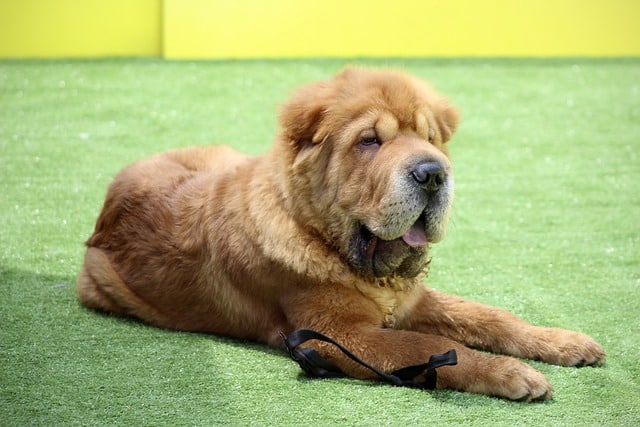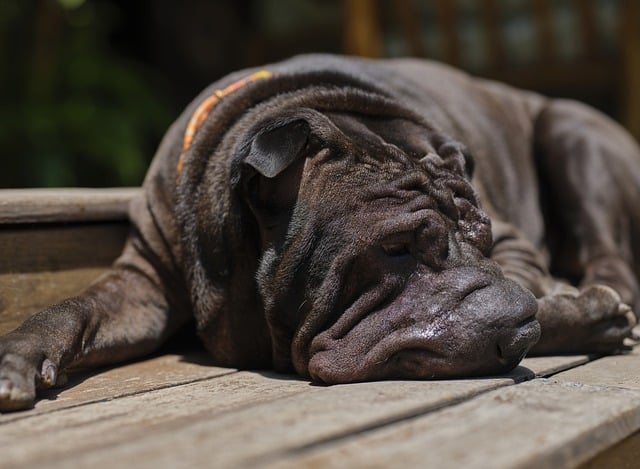Shar Peis are one of the most distinct dog breeds, famous for their wrinkled skin, “hippopotamus” faces, and loyal personalities. Their unique appearance and Chinese heritage make them an appealing breed, but they are often misunderstood. Myths about their temperament, health, and care have made some hesitant to welcome them into their homes. Let’s debunk five common myths about Shar Peis to give you a clearer understanding of this incredible breed.
Myth 1: Shar Peis Are Aggressive Dogs
One of the most widespread misconceptions about Shar Peis is that they are inherently aggressive. This myth likely stems from their history as guard dogs and fighting dogs in ancient China. However, modern Shar Peis are more likely to be reserved, calm, and loyal than aggressive.
Shar Peis are naturally protective of their families and can be wary of strangers, but this doesn’t equate to aggression. When raised in a loving, stable environment with proper training and socialization, they are gentle, affectionate dogs. Early socialization helps them learn how to behave around new people and other animals, reducing any tendency towards territorial behavior.
Aggression in Shar Peis is often a result of poor breeding practices or a lack of proper training and socialization. Like any breed, they can develop behavioral issues if neglected or mistreated, but they are not predisposed to aggressive behavior. In fact, they tend to bond strongly with their families and become loyal companions.
Myth 2: Shar Peis Are High-Maintenance Because of Their Wrinkles
The iconic wrinkles of a Shar Pei are both charming and misunderstood. Many people believe that these wrinkles make them a high-maintenance breed, requiring constant care to avoid infections or skin problems. While it’s true that Shar Peis need some extra attention when it comes to their skin, they are not as difficult to care for as some might think.
Their wrinkles can trap moisture, dirt, and bacteria, which may lead to skin infections if not properly cleaned. However, regular grooming and a simple routine of wiping between their folds with a damp cloth or pet-safe wipes can prevent these issues. It’s not an overwhelming task, especially for owners who are proactive about their dog’s hygiene.
Moreover, some Shar Peis have fewer wrinkles than others. Puppies are more wrinkly, but many of these folds smooth out as they grow into adults. Adult Shar Peis, especially those with fewer wrinkles, require even less maintenance than their puppy counterparts.
The key is to monitor their skin health and seek veterinary advice if you notice any signs of irritation or infection. With a bit of attention, keeping your Shar Pei’s skin healthy is perfectly manageable.
Myth 3: Shar Peis Are Not Good with Children
Another misconception about Shar Peis is that they aren’t suitable for families with children. People assume that their protective nature and independent streak make them poor companions for kids. This simply isn’t true.
While Shar Peis are indeed protective, they can be excellent family dogs, including in homes with children. In fact, their loyalty and calm demeanor can make them wonderful companions for kids. Shar Peis tend to bond deeply with their family members, and they are often patient with children who know how to interact respectfully with dogs.
As with any breed, teaching children how to properly interact with a dog is essential. Children should be taught not to pull on the dog’s ears, tail, or wrinkles and to give the dog space when needed. Supervised interactions, especially with younger children, ensure that the relationship between the dog and child is positive and safe.
Early socialization also plays a key role here. A well-socialized Shar Pei is more likely to feel comfortable and relaxed around children, while dogs that haven’t had positive experiences with kids may feel uneasy. But with the right approach, Shar Peis can thrive in family settings and become loving companions to children.
Myth 4: Shar Peis Are Unhealthy Dogs
The breed’s unusual appearance has led some to believe that Shar Peis are inherently unhealthy dogs. While it’s true that Shar Peis are prone to certain health conditions, they are not an inherently sickly breed.
One common health issue in Shar Peis is a condition known as “Shar Pei Fever,” a disorder characterized by recurrent fevers and swollen hocks (ankles). Another concern is entropion, a condition where the eyelids roll inward, causing irritation to the eyes. Both of these conditions can be managed with proper veterinary care and regular check-ups.
Additionally, their wrinkled skin can sometimes lead to skin infections if not properly cared for, but this can be avoided with good hygiene practices. Responsible breeders strive to reduce the occurrence of genetic conditions by carefully selecting healthy dogs for breeding, which significantly improves the overall health of the breed.
It’s important to remember that all breeds have their own health challenges, but a well-bred and well-cared-for Shar Pei can live a long and healthy life, just like any other dog. Regular vet visits, a healthy diet, and proactive care are key to keeping a Shar Pei happy and healthy.
Myth 5: Shar Peis Are Difficult to Train
Shar Peis are often labeled as stubborn or difficult to train, which can discourage potential owners. However, this is more myth than fact. While it’s true that Shar Peis are independent thinkers, they are also intelligent and capable of learning a wide range of commands and behaviors when trained properly.
Their independence can sometimes be mistaken for stubbornness, but with patience and positive reinforcement, Shar Peis can excel in training. They respond well to consistent training methods that rely on rewards rather than punishment. Harsh training methods or dominance-based approaches can lead to resistance, while positive reinforcement fosters cooperation and trust.
Starting training early and keeping sessions short and engaging are crucial when working with Shar Peis. They are not as eager to please as some breeds, like Golden Retrievers, but this doesn’t mean they can’t be trained. They just require a bit more creativity and patience from their trainers.
In fact, many Shar Peis are quite food-motivated, which can be an excellent tool in their training. With the right approach, these intelligent dogs can master obedience, tricks, and even participate in dog sports like agility.

Shar Peis are a fascinating breed with unique traits and an interesting history, but they are often misunderstood due to persistent myths. Far from being aggressive, difficult, or unhealthy, Shar Peis can make wonderful companions for the right family. With proper care, socialization, and training, they can thrive in a variety of households. By debunking these common myths, potential owners can better understand what it’s like to share their life with one of these loyal, distinctive dogs.

 Toledo, United States.
Toledo, United States.